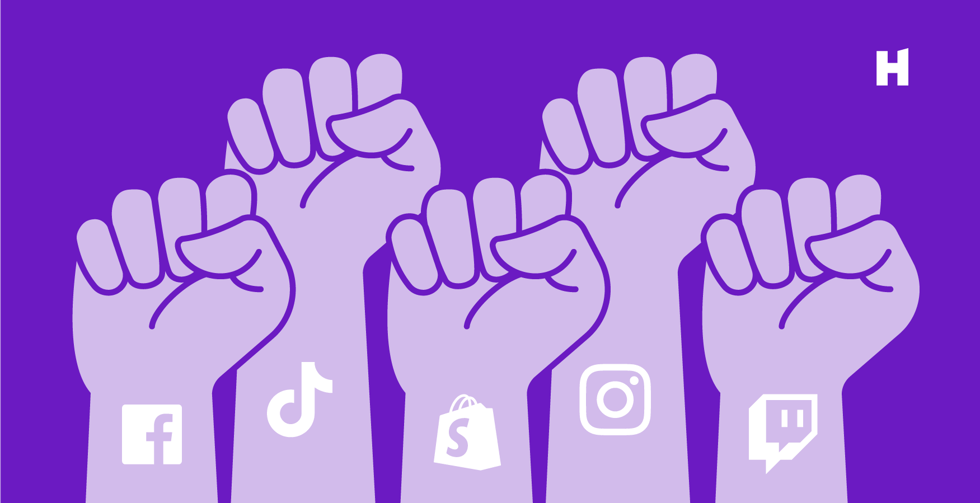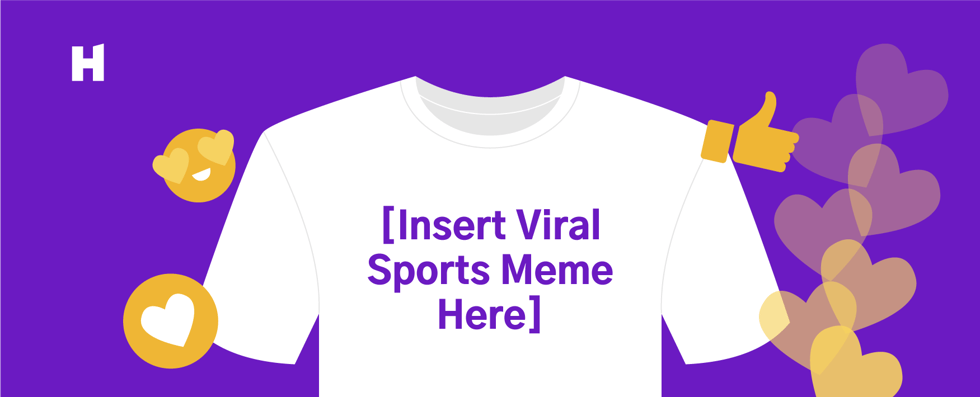NEW CASE STUDY: See how we built a custom digital platform for Melissa Wood Health
NEW CASE STUDY: See how we built a custom digital platform for Melissa Wood Health

At the onset of social media (think MySpace) the networks were created as a way to connect with people you already knew, or wanted to interact with. It’s hard to imagine the creators of these platforms could have ever dreamed they would be facilitating millions of online business transactions per day, but that’s exactly where we are.
There are social commerce examples all around us that we can learn from.
But before we get into the playbooks for social commerce, there is a key concept you need to understand. Even just as little as a few years ago, social media was more of a discovery platform for products. Essentially, you would see something on your feed, show a bit of interest, and then possibly buy later.
Channels like search, retargeting, and email were essential components of the purchase funnel. While that is still true, the social platforms themselves, and the rise of the creator economy, have increased the effectiveness of social networks as tools for ecommerce.
In this post we’re going to unpack five social commerce examples from brands using it to grow their bottom line with strategies like creator marketing, live streaming, and in-platform ‘shops.’
Let’s get started.
Social commerce is a subset of ecommerce with the distinction that users buy within whichever social network they’re currently browsing. Currently, there are four social platforms that offer social commerce functionality within their apps—Facebook, Instagram, and Pinterest. TikTok is in testing.
Quickly, a few benefits of social commerce for brands are:
If you’re going to truly capitalize on social commerce, however, you need to understand the role that inclufeners and creators play in it. There are currently upwards of 50 million creators who are earning substantial incomes (2 million professionals working full time) through partnerships with brands in the form of paid promotions, affiliate revenue, events, and more.

Their ability to move product is so powerful that platforms like Instagram are actually providing tools and compensation to keep them active.
Consumers are increasingly looking to creators for recommendations because they model the lifestyle they are aspiring to—entrepreneurship, travel, meaningful work, etc. Tools like in-platform shops and live streaming are tools, but the social commerce revolution is really being driven by the creators themselves. That said, let’s take a closer look at some examples.
One crucial paradigm shift marketers will need to understand to fully unleash the power of social commerce is that creators do more than just create content now—they actually create distribution channels as well.
Once an creator becomes popular enough, they can essentially carve out a ‘safe space’ for themselves on their own app or platform. This will reduce their reliance on more traditional social media networks and open opportunities for new types of brand collaborations and (potentially more profitable) monetization methods.
Consider this path for a budding creator:
In this way, the current social media channels being used are only a stepping stone to a far more vertically integrated distribution channel run by the creators’ themselves. And the future is happening now!
The best way to learn how to draw is to start by tracing to build the muscle memory. In that vein of thought, take a look at some of these social commerce examples from brands and creators that have mastered it.

While China’s social media networks may look much different from those based in the U.S., their creators have mastered the art of social commerce using the tools available to them.
Austin Li Jiaqi is known as the "Lipstick King" in China. He’s built a following of upwards of 7 million on Weibo and more than 35 million on TikTok. Fans like his honest, funny, and candid takes on beauty products, but also his stunts—he once tried on 380 lipsticks during a seven-hour live-stream.
Li is an early adopter of live streaming for social commerce; a report from Gartner indicates they expect widespread adoption of this technique within the next two years.
Livestreaming on social platforms is essentially what QVC was for the previous generation. But rather than rely on traditional channels like TV and traditional bureaucratic processes for distribution, creators are able to have unprecedented control over their audience, their schedules, and their results! Famously, Li once sold 15,000 lipsticks in just five minutes in a one-on-one selling competition with Alibaba founder Jack Ma.
And there’s plenty of benefit in this occupation for Li himself—Chinese media estimates that he earns somewhere between $10 to $20 million per month from live-streaming.

Social media and sports is a perfect combination. You get the satisfaction of cheering your team on with your peers as if you were in the stadium, except you’re actually on a couch with your phone...
Barstool realized this early on, and they also realized that fandom has the power to create its own news stories. People love sports, they love viral videos, therefore it’s no surprise they like the combination of the two. This is basically part of Barstool’s business model:
For example, when the ‘Suns in 4’ in-arena fight went viral on social media, Barstool immediately capitalized with merchandise. Additionally, they gave the star of the video a cut of the merchandise revenue and live streamed an exclusive interview with him. This tactic essentially lengthened the news cycle, which increased revenue from merchandise.
Well played, Barstool.
Shopify has indicated it thinks the future of ecommerce will not only be video, but live-streaming video. And if that’s the case, handbag designer Rebecca Minkoff is already there.
In 2020, the shopping app ShopShops made it’s U.S. debut (it had already been operating in Asia) in coordination with Rebecca Minkoff. Shopping has always been an event, but it’s always taken place in the physical realm—commuting, shopping, lunch, and perhaps even drinks afterwards. ShopShops is now an event that takes place in the virtual realm.
In case you weren’t familiar, ShopShops is a live streaming platform specifically designed for shopping. Hosts will go live with product reviews and promotional discounts for items that many consider to be ‘off the beaten path’ and therefore desirable. Vogue has called the startup “The future of shopping.”
Live streaming offers plenty of benefits to brands in terms of collaborations with creators and the audiences they bring, but also the PR ‘sizzle’ of embracing a new technology that fits our new stay-at-home culture. Watch for more brands to follow suit in terms of live streaming their promotions.
The ecommerce industry writes excessively on the benefits of paid social advertising, but the main topics are generally Facebook and Instagram, and more recently, Snap and TikTok. Pinterest is often left out of the mix, but in analyzing MVMT’s success on the platform, perhaps brands should be looking a bit closer at Product Pins.
MVMT, the watch and accessory company we’ve written about before, saw an incredible response (in terms of conversion rate) to using Pinterest’s Product Pins. A Product Pin looks similar to an organic pin, but the difference is that it is enriched with metadata like price, availability, etc., which lets audiences know that they can buy right there.
Stepping back, you can see how offering this type of frictionless conversion to somebody who is already browsing their Pinterest profile. MVMT’s three-month paid campaign on Pinterest generated more than 11,000 sales and increased their engagement on the platform 12x! This strategy also helped the fashion brand attain the highest average order value on Pinterest compared to all other traffic sources.
It should also be noted that this strategy is best when paired with a mature, professional, and fully complete profile.
In case you haven’t noticed, we are extremely bullish on live streaming for social commerce. Why, you ask? There are some compelling, albeit early, statistics making a strong case for adding live streaming into your marketing mix.
Let’s back up a second and take a look at this social commerce example from Aldo.
In Spring of 2021, Aldo partnered with Instagram creator Mimi Cuttrell and entertainer Nate Wyatt to host a ‘QVC-style’ show where the audience could watch product demos, listen to commentary, and actually buy products in real time from the actual stream.
Aldo was inspired by the success Asian brands were having with this tactic (see the Lipstick King example from earlier in this post) and were not disappointed with the results. In fact, based on its success with the pilot event, Aldo is looking at ways to incorporate more live streams into its overall marketing strategy.
While these social commerce examples span a wide range of tactics—from Pinterest to live streaming—what’s one thing they all have in common?
That’s right—even the best marketing in the world will fail if you don’t back it up with the ability for consumers to confidently transact with your brand via mobile, desktop, or even directly on the social platform.
At Heady, we are not marketers, but we do consider ourselves the best friend of our clients’ marketing departments because we combine insight-driven feature development, on-brand native mobile app design, and flawless implementation in our approach to ecommerce transactions.
If you’d like to learn more about our approach to helping facilitate ecommerce sales via custom-built applications, head over to our services page and read your heart out.
Our emails are (almost) as cool as our digital products.
Your phone will break before our apps do.

© 2024, Heady LLC.